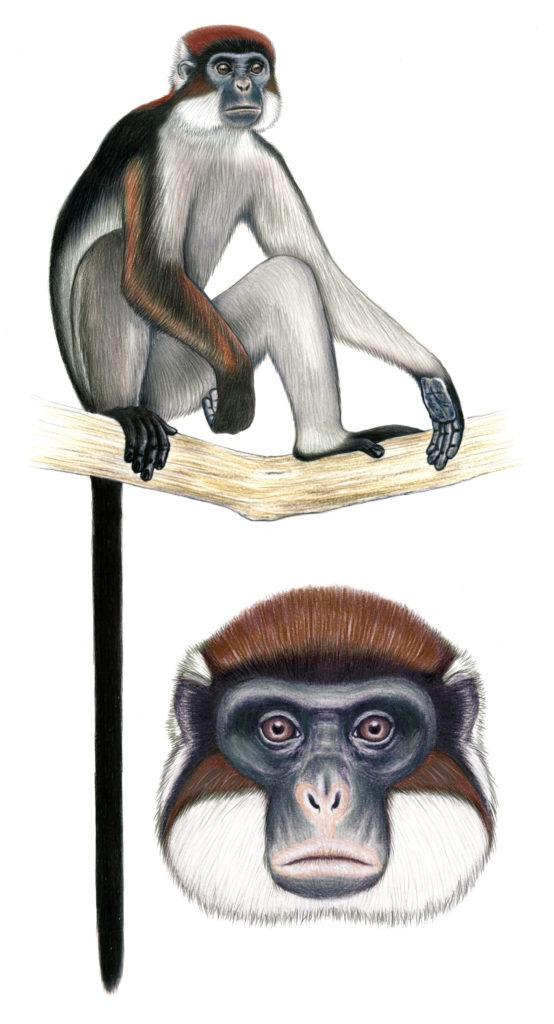
Critical Countdown: The Disturbing Status of Global Primate Conservation
A recently published international report has issued a resounding alarm for the protection of the world’s most at-risk primates. The biennial Primates in Peril: The World’s 25 Most Endangered Primates 2023–2025, compiled by the IUCN SSC Primate Specialist Group, the International Primatological Society, and Re:wild, highlights the 25 primate species that are on the brink of extinction and emphasizes the urgent necessity for organized conservation initiatives worldwide.
A Grave Situation Across Four Continents
The evaluation covers areas across four continents—Africa, Asia, South America, and the island of Madagascar. In total, six critically endangered primate species were identified from both Africa and the Neotropics (Central and South America), nine from Asia, and four from Madagascar. Indonesia and Madagascar are at the heart of this crisis, each featuring four species on the list. Additionally, China, Nigeria, and Vietnam each account for three, revealing the global scope and geographic variety of this issue.
“This compilation is not merely a record of disappearing species—it’s a rallying cry,” states Christian Roos, a geneticist at the German Primate Center. “The circumstances are dire. If we do not act swiftly, we will lose some of these species forever. However, there is hope—if science, policy, and society unite in their efforts.”
From Majestic Apes to Tiny Lemurs: A Shared Grief
The newly identified Tapanuli orangutan (Pongo tapanuliensis), which was only recognized by the scientific community in 2017, ranks at the top of the report as the world’s most endangered great ape. Fewer than 800 individuals remain in isolated forest fragments in North Sumatra, facing threats from deforestation, mining, and hydropower projects.
Conversely, the minuscule Madame Berthe’s mouse lemur (Microcebus berthae), weighing a mere 30 grams, is on the brink of what could become the first primate extinction of the 21st century. Peter Kappeler from the University of Göttingen, who oversees field studies in Kirindy Forest in Madagascar, reports concerning population declines: “This species has vanished from most of the few remaining intact forests, indicating alarming repercussions for potential conservation strategies. There are no captive populations—should they disappear in the wild, they will be lost forever.”
Common Threats, Worldwide Implications
Despite the discrepancies in size, habitat, and location of these endangered primates, the factors contributing to their decline are strikingly similar:
1. Habitat Destruction and Fragmentation: Industrial agriculture, logging, road construction, and urban expansion continue to ravage the forests these species rely on for survival.
2. Hunting for Bushmeat and Traditional Medicine: In numerous regions, local consumption and the commercial trade of primates pose significant threats.
3. Climate Change: Altering temperatures and disturbed rainfall patterns increasingly jeopardize fragile ecosystems, particularly for those island species with highly specific requirements.
4. Illegal Wildlife Trade: The capture and smuggling of primates for the pet trade and entertainment industries are thriving in certain regions of Asia and the Americas.
The extinction of any primate species has repercussions that extend far beyond mere biodiversity statistics. “Primates fulfill vital ecological functions,” remarks Roos. “They distribute seeds, shape forest composition, and uphold ecosystem health. Their loss triggers a ripple effect that impacts not just nature, but also the human communities that rely on these forests.”
Learning from Conservation Triumphs
Though the overall projection is bleak, the report highlights several conservation successes—evidence that decisive, targeted actions can reverse unfavorable trends.
In Vietnam, the Cat Ba langur (Trachypithecus poliocephalus), once regarded as one of the rarest primates with only about 40 individuals remaining in the early 2000s, now boasts a population of over 90 thanks to years of committed conservation efforts involving local communities, habitat preservation, and tourism alternatives.
Peru’s Peruvian yellow-tailed woolly monkey (Lagothrix flavicauda), previously thought to be extinct, has been revived and safeguarded through remote habitat monitoring and the establishment of new reserves. These successes demonstrate that timely interventions, along with robust community involvement, can alter the fate of endangered species.
What’s Required: Bold, Unified Action
The Primates in Peril report outlines several crucial strategies that could offer these endangered species a fighting chance:
– Expanded Protected Areas: Many vital primate habitats still lie outside designated protected zones or are inadequately managed. The establishment and enforcement of reserves is critical, particularly in biodiversity hotspots such as the Congo Basin, Amazon, and Southeast Asia.
– Empowerment of Indigenous and Local Communities: Individuals residing near primate habitats often share profound cultural connections to the land. Providing them with sustainable livelihoods and management opportunities has proven to be an effective conservation strategy.
– Legislative Reforms and Anti-